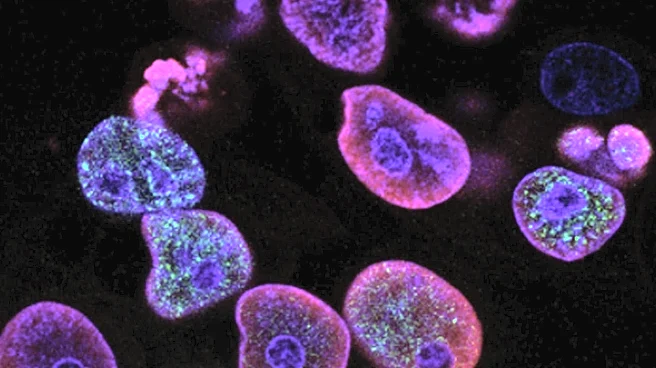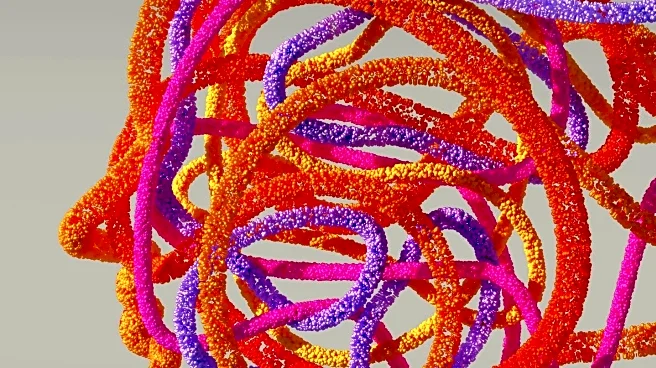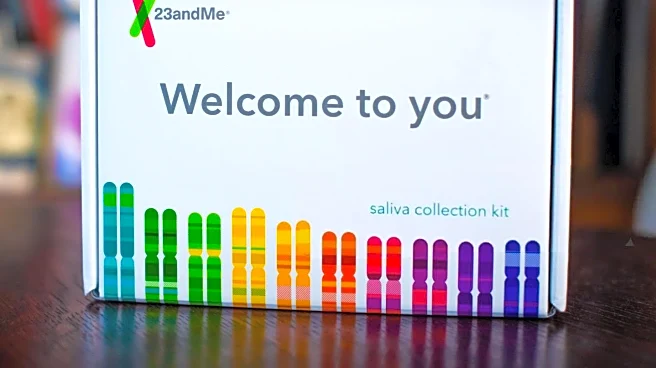What's Happening?
A recent study has highlighted the potential of circulating tumor cells (CTCs) as prognostic biomarkers for patients with asymptomatic monoclonal gammopathies, such as monoclonal gammopathy of undetermined
significance (MGUS) and smoldering myeloma (SMM). Utilizing Next Generation Flow Cytometry (NGF), researchers evaluated CTCs in 253 patients diagnosed with SMM or non-IgM MGUS. The study found that CTCs were detectable in 35.6% of patients, with a higher prevalence in SMM cases compared to MGUS. The presence of CTCs was associated with a higher risk of progression to symptomatic myeloma, suggesting their potential as a non-invasive tool for risk stratification. The study also explored the correlation between CTC levels and other biomarkers, finding moderate associations with disease burden indicators such as bone marrow infiltration and serum free light chain ratios.
Why It's Important?
The identification of CTCs as prognostic biomarkers could significantly impact the management of monoclonal gammopathies by providing a non-invasive method to assess disease progression risk. This advancement may lead to more personalized treatment strategies, allowing for earlier intervention in high-risk patients and potentially improving outcomes. The study's findings align with previous research, reinforcing the role of CTCs in understanding disease dynamics and progression. As the healthcare industry continues to move towards precision medicine, the integration of CTC analysis could enhance risk stratification and inform treatment decisions, ultimately benefiting patients with MGUS and SMM by potentially delaying or preventing the onset of symptomatic myeloma.
What's Next?
Further research is needed to establish standardized cutoff values for CTC levels to ensure consistency in clinical practice. Long-term studies could provide additional insights into the role of CTCs in MGUS and their potential to predict disease progression. The integration of CTC analysis into routine clinical assessments may require the development of guidelines and protocols to facilitate its adoption. As the study suggests, combining CTC analysis with immune cell profiling could enhance risk stratification, offering a more comprehensive understanding of disease biology and informing early intervention strategies.
Beyond the Headlines
The study underscores the importance of non-invasive biomarkers in the evolving landscape of cancer diagnostics and treatment. The ability to monitor disease progression through blood tests rather than invasive procedures could improve patient quality of life and reduce healthcare costs. Additionally, the findings may prompt further exploration into the biological mechanisms underlying CTC presence and their role in disease transformation, potentially leading to novel therapeutic targets.











